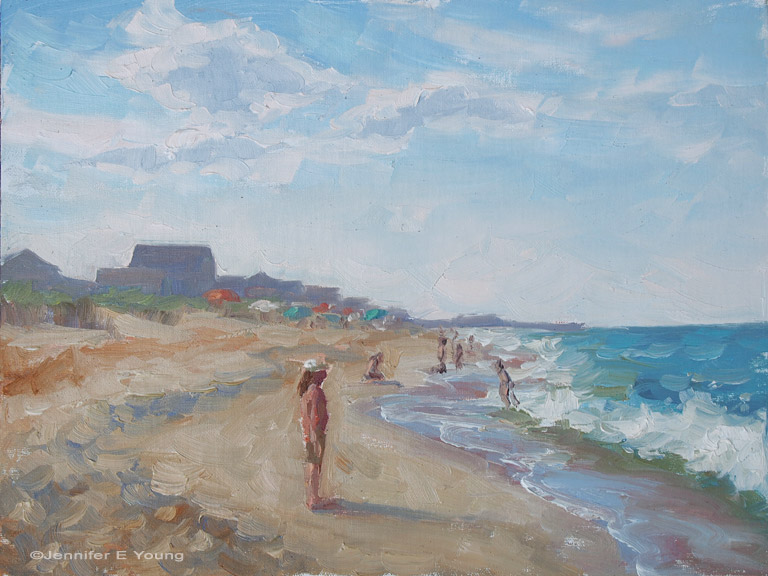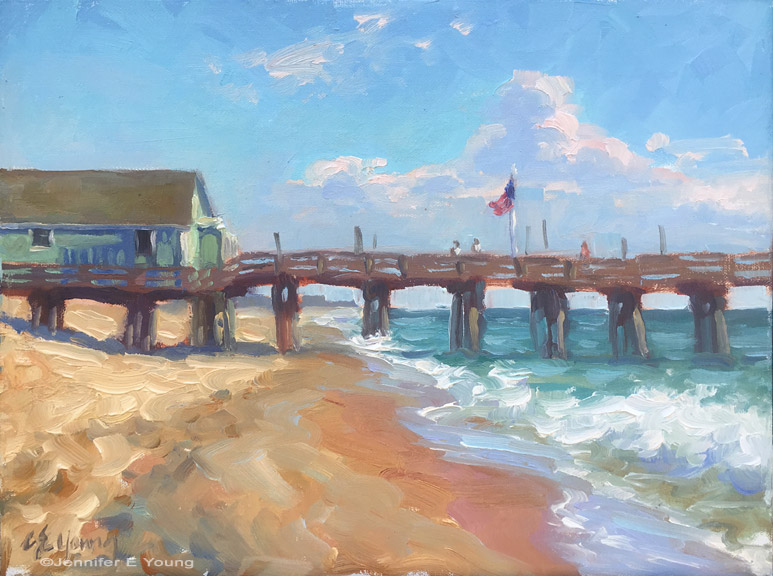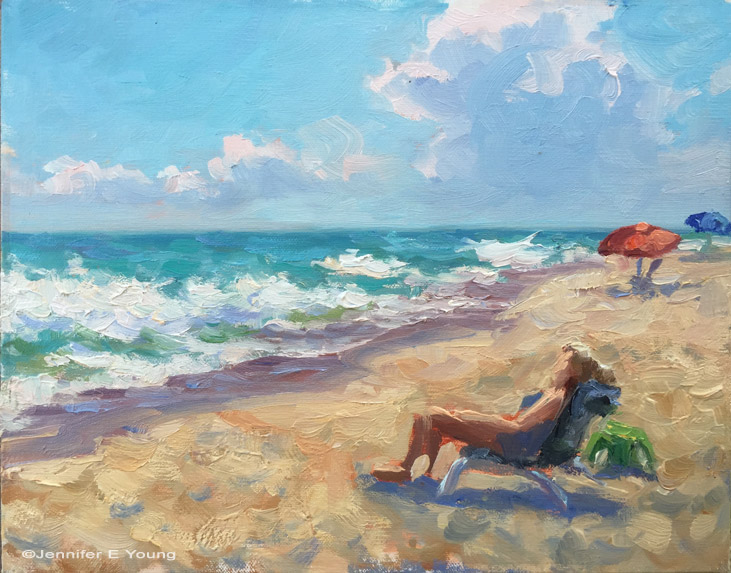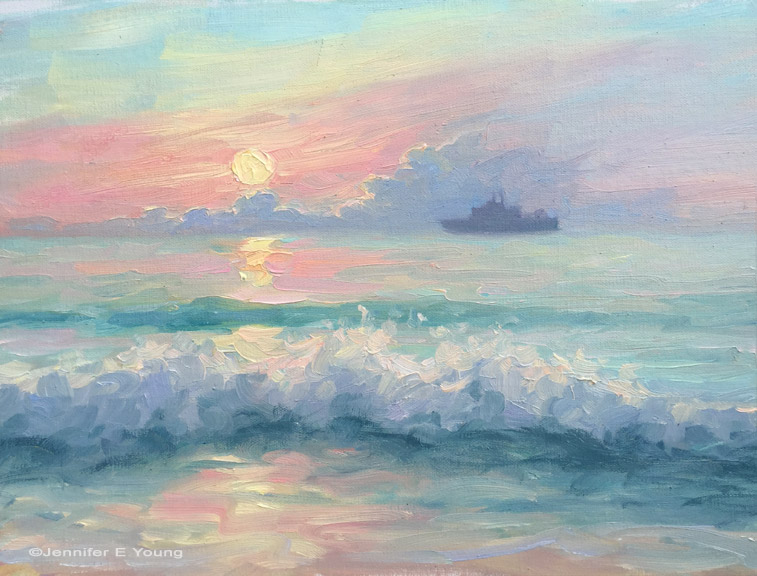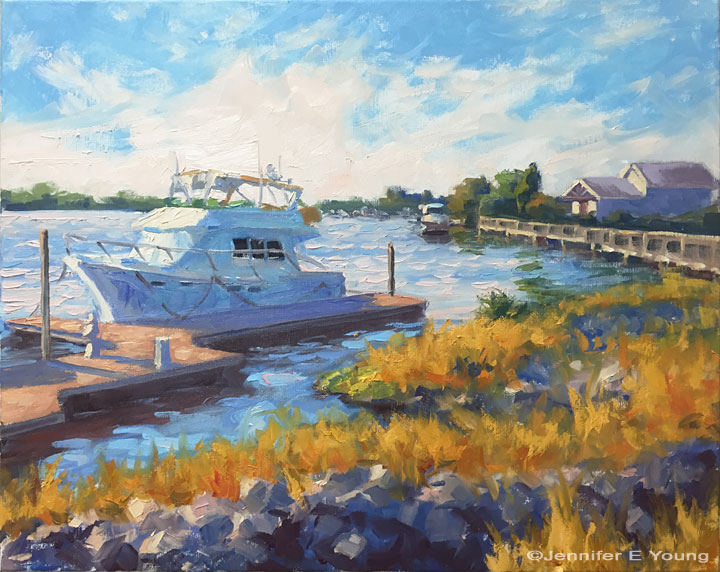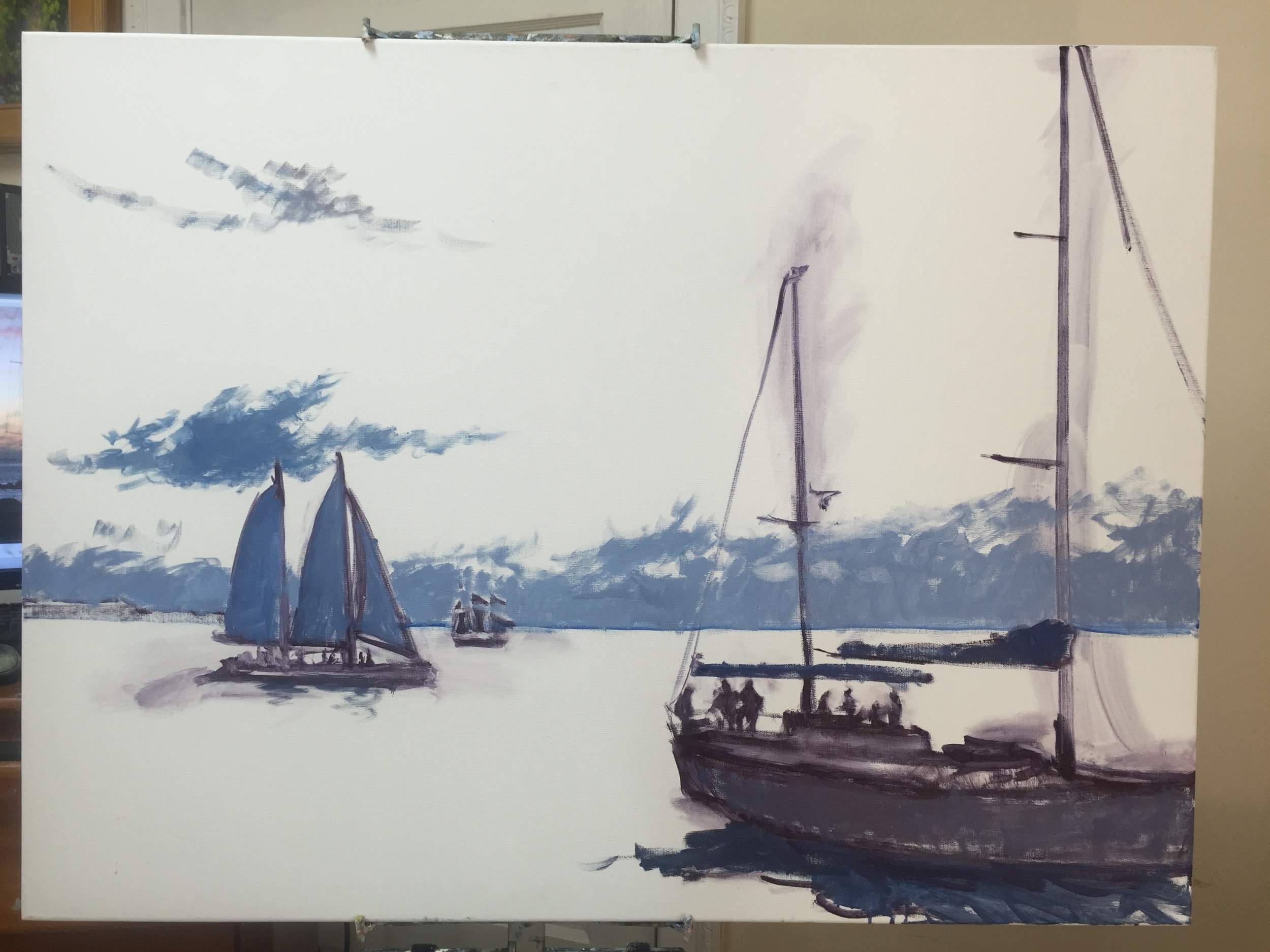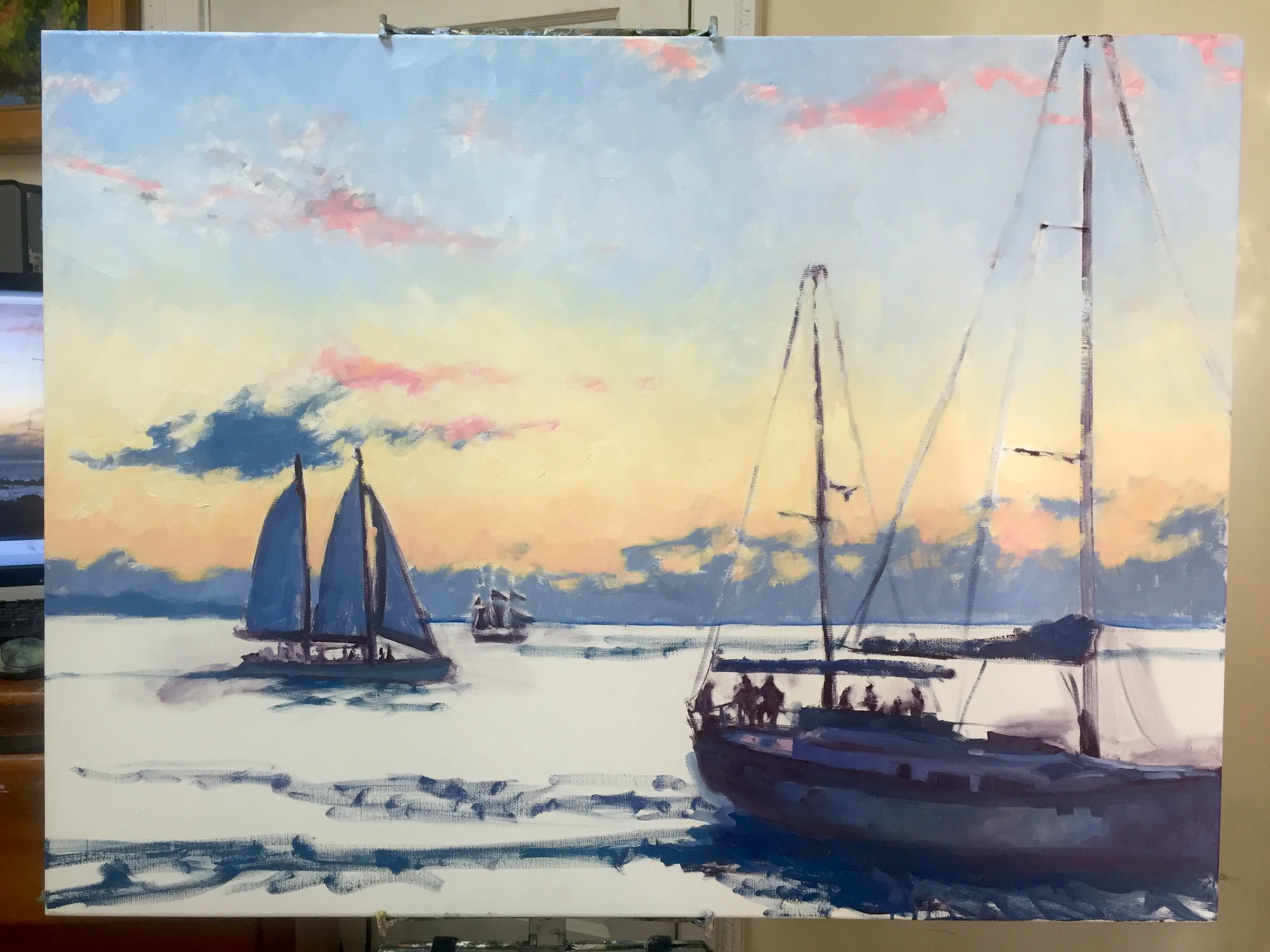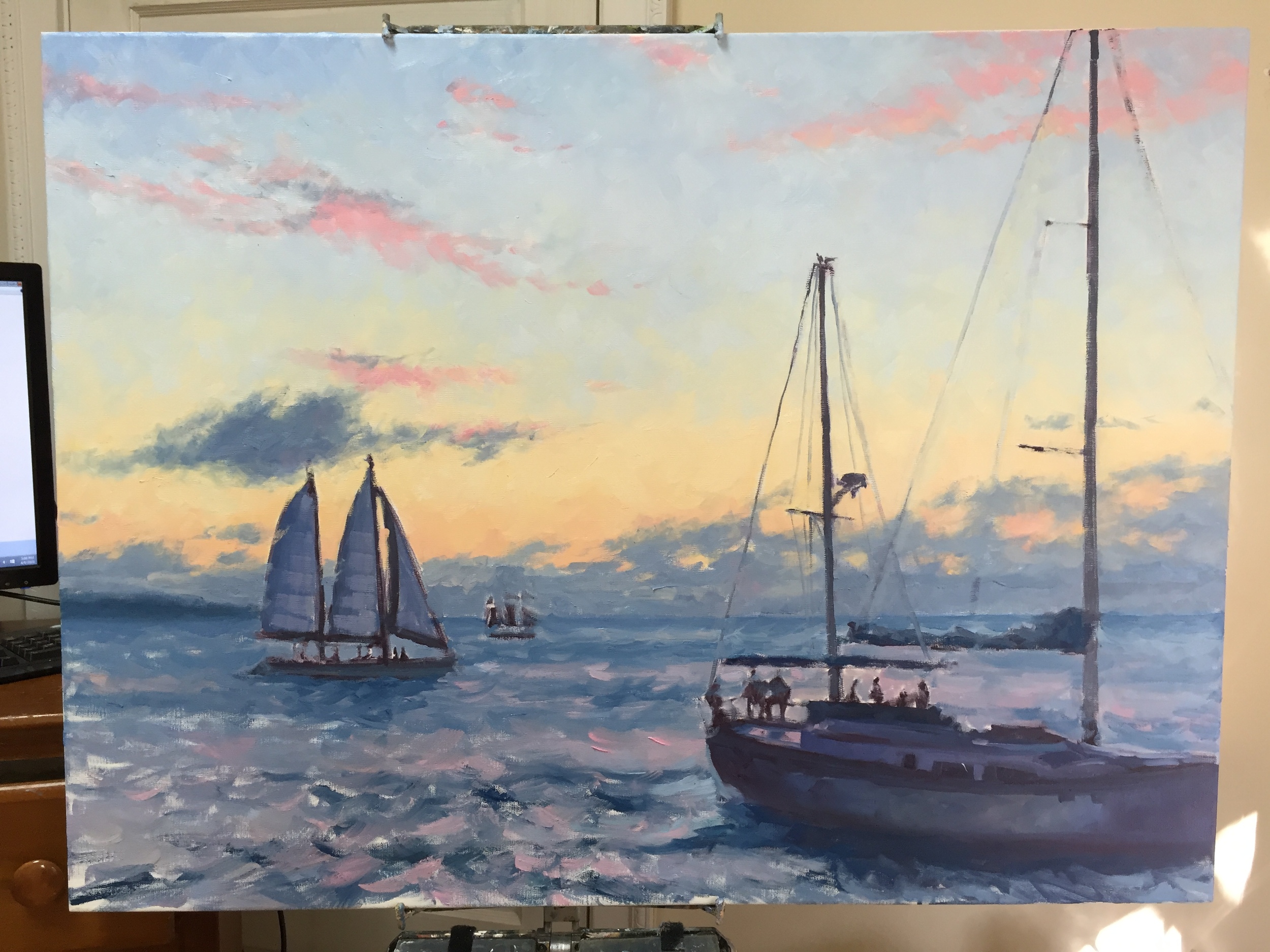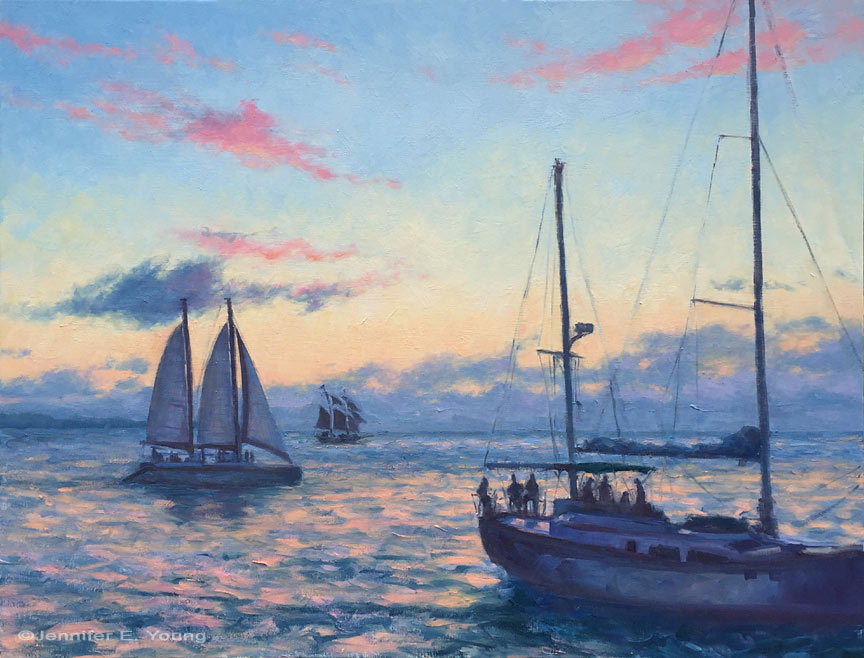Delphinium Walk
/It is blazing (as in dangerously) hot outside, so as I value my health, I've been having a good time inside reinterpreting my outdoor paintings. 😄 Not every plein air painting I've done calls for expansion. Some of my local pieces are just right as charming vignettes. But this garden piece, painted at a beautiful estate off of River Road, commanded more study.
My 24x20" painting, alongside the 9x12" plein air
These are the delphiniums at Redesdale, which I had the great pleasure of painting in very changeable weather this past spring. I started out attempting a more literal translation, but given that the new piece was enlarged, and scaled slightly differently, I felt as if the composition need some alteration. The painting seemed to want more breathing room, so I scraped down much of the sky around the upper right quadrant and pushed the trees on that side further into the distance. Here is the final:









